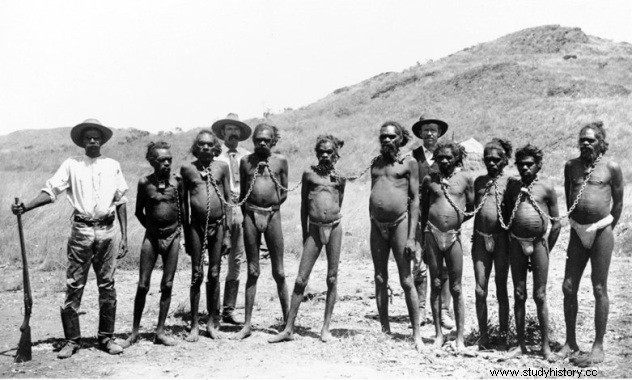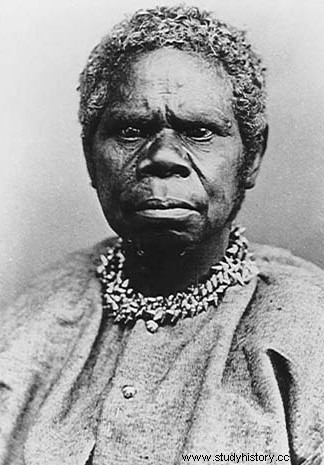Although the British called it Black War (Black War), no war was declared. This is how the English call the extermination of the Tasmanian aborigines promoted directly by the British Empire.
The island of Tasmania – a place name known from the Warner cartoons whose protagonist is the Tasmanian Devil – is located two hundred and forty kilometers southeast of Australia. The island was inhabited by aborigines with black complexion, curly hair, short stature (men 1.60 meters and women 1.48 meters) and slim build, dedicated to hunting and gathering with very rudimentary means. They had the misfortune that the Dutch navigator Abel Tasman Jansen arrived at the coast of it in 1642. Until in 1855 Tasmania began to be called by the discoverer of it, it was called Van Diemen's Land by Anthony Van Diemen Governor General of the Dutch East India Company at the time. Later the French and British passed through and began to enslave many aborigines. In 1803, the British established a penal colony in Tasmania and the island began to welcome the best of every house. With these undesirables also came settlers willing to get land to settle without respecting the hunting territories of the aborigines. It didn't take long for the first clashes to arrive between the settlers, supported by the British army, and the natives of the place who always had the losing side:murders, rapes or kidnappings were repeated without any punishment for the Europeans. Despite everything, the Tasmanian aborigines tried to defend themselves, but they could do little with stones and spears against firearms.

Between 1803 and 1830, the population grew from an estimated five thousand Tasmanians to about two hundred. In 1826, the Tasmania Colonial Times justified it as self-defense (?):
We are not here for our philanthropic work. Self defense is the first law of nature. If the government does not eliminate the natives [they considered relocating them to another island], they will be hunted like wild animals.
To put an end to this problem on the fast track, in 1828 the hunting of Aborigines was authorized, establishing a reward of five pounds for the capture of an adult and two pounds for a child. In 1860 the last Tasmanian man died and, in memory, the miserable George Stokell , from the Royal Society of Tasmania , he ordered his body to be skinned to make a wallet. The last Tasmanian woman, Truganini , she died in 1876… The genocide was over.

Trugannini
